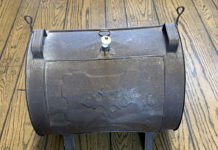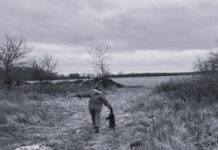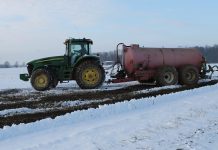Farming is truly risky business. Every moment of every day on the farm holds inherent risk. The main duties of the farm manager in any sector are to identify, evaluate and mitigate risk.
One of the risks forage managers face on a regular basis is the threat of persistent weeds. Weeds are an issue that compound over time if not addressed soon after detection. Choosing to make the investment in weed prevention and control early can help prevent exponential population growth that is increasingly difficult to manage.
Any plant in the wrong place can be considered a weed, but not all weeds are created equal as threats in forage production. All plants offer some benefit to an ecosystem, but we must weigh the benefits against the risks when we develop a weed management program in grazing and hay systems.
Weed risk analysis
Step one in your weed risk analysis process is to identify the weeds in your system. Forage crops are often a diverse mix of plants and it can be challenging to identify a plant as friend or foe.
In a forage system, weeds are plants that can cause health issues for livestock and/or outcompete desirable plants for nutrients, sunlight, and square footage.
To identify a weed, pay attention to plant traits including:
- Site preference: soil moisture, terrain and sunlight.
- Growth habit: climbing, upright or creeping.
- Woody or herbaceous roots: when traced back to the root, are the stems woody or soft?
- Leaves, stems, and flowers traits like shape, size, color, hairs, thorns, secretions and scent.
- Root depth: connected roots above or below ground, shape and color.
Step two: evaluate the risk associated with the weed. Evaluate potential threats like toxicity to livestock. If it is toxic, at what levels and circumstances.
Other things to consider include: allelopathy to surrounding plants; seed production; seed persistence; life cycle; are there other methods of reproduction or regeneration besides seed production like rhizomes, stolons, and suckers; and site preferences.
Step three is to mitigate the associated risk of the weed. Consider why the weed is there and correct issues that may have led to establishment. There could be fertility issues with the site that prohibit desirable plants from succeeding. Maybe there are bare spots in the field from animal or machinery traffic or water flow. Was the seed introduced by the wind, wildlife, machinery or contaminated hay, seeds or manure?
Use an integrated pest management program to reduce the population. These strategies include a combination of:
- Cultural control: strategic mowing, hand pulling, fertilizer application, tillage and reseeding competitive beneficial plants
- Biological control: strategic grazing if the weeds are edible, but still threatening.
- Chemical control: selective and safe use of approved herbicides to suppress weed growth and allow competing beneficial plants to regain ground.
Evaluate the cost of each control method, both from the standpoint of production loss, up-front cost and payback period.
Financial analysis should answer these questions: can we afford this treatment; can we afford to do nothing; how much estimated revenue has been lost from the weed competition or health complications of livestock?
Landowners of Noble, Guernsey, Muskingum and Morgan County are eligible to apply for cost recovery funds to treat spotted knapweed in pasture and hay fields. The Spotted Knapweed Treatment for Ohio Producers, or STOP, Project is funded through the Regional Conservation Partnership Program, which is administered by the Natural Resources Conservation Service.
Some general advice
When you are questioning a weed think of this: when in doubt, pull it out. Wear gloves if you are concerned about potential skin reactions and collect as much of the specimen in question as possible.
Photograph the weed from far away and close. Send the photos to your local extension service. Thoroughly describe the features listed in step one for the best chances of quick and accurate identification.













